Step out to observe a full Moon and you'll be greeted by one of the best, most mesmerising naked-eye celestial spectacles.
Not every astronomer feels this way though. When the Moon is full its bright disc lights up the sky.
This frustrates observers of faint galaxies and imagers wanting to take long exposures without gradients spoiling their shots.

There are some who take a more defeatist attitude to the full Moon, that it is the worst of the Moon's phases.
They say the bright lunar glare leaves little else to see, or wonder conspiratorially why the skies only seem to be clear when the Moon is shining.
If you're concerned about imaging when the Moon is bright, read our guide to astrophotography during a full Moon.
Sign up to receive the BBC Sky at Night Magazine e-newsletter and get Moon phases delivered to your email inbox every week

Should you observe a full Moon?
At full Moon the landscape on the Earth-facing side of the lunar globe is lit from directly above.
This means that the dramatic shadows and relief we see during other phases is gone.
The result is the spectacular textures of the Moon’s craggy surface are rendered almost invisible.
And many mountains and craters seem to disappear into their surroundings.
Many astronomers will tell you not to bother trying to observe the full Moon, as it's best seen during the crescent and gibbous phases.
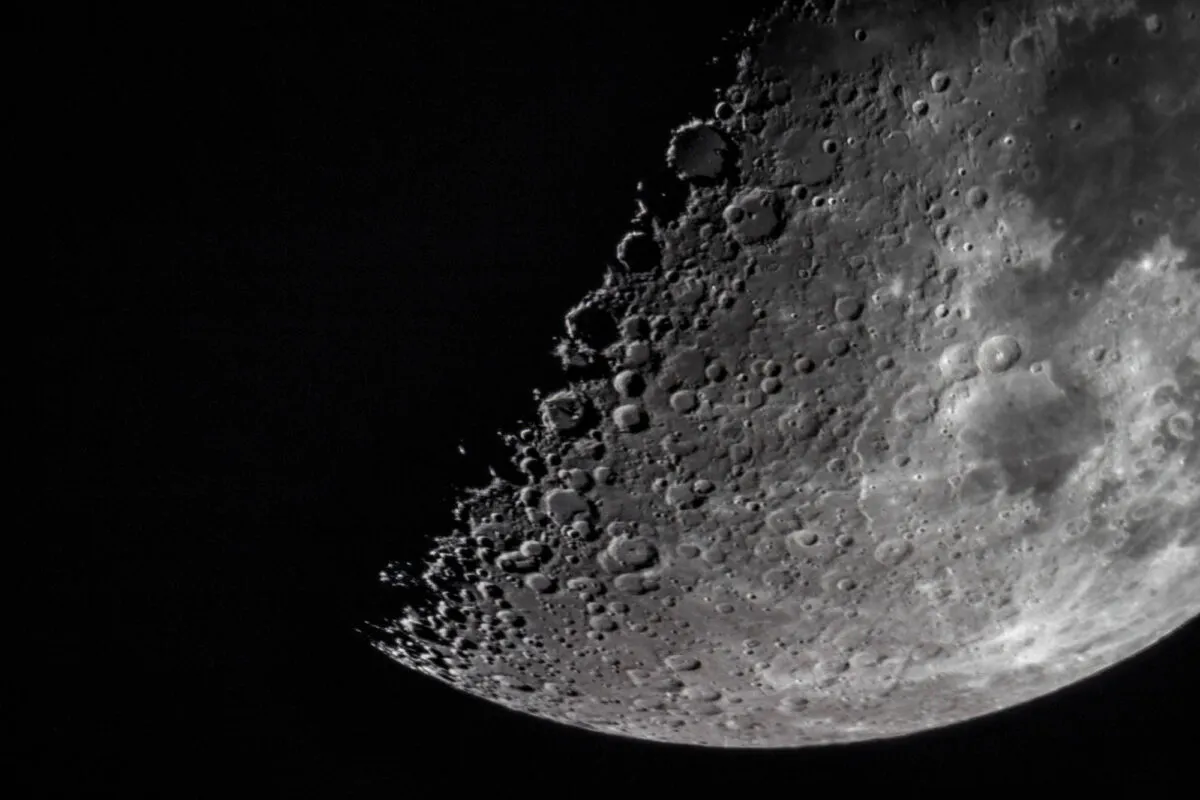
This is when shadows are cast and the terminator (the shadow and relief-rich boundary between the illuminated and unlit portion of the Moon) emphasises topographical features.
But there is still plenty to enjoy during a full Moon. Step outside during the next full Moon and see what you can spot.
In this guide we're going to celebrate the full Moon, revealing how best to observe it, and what you should look out for.
For advice on exploring the Moon whatever its phase, read our guide on how to observe the Moon.
Observe the full Moon rise
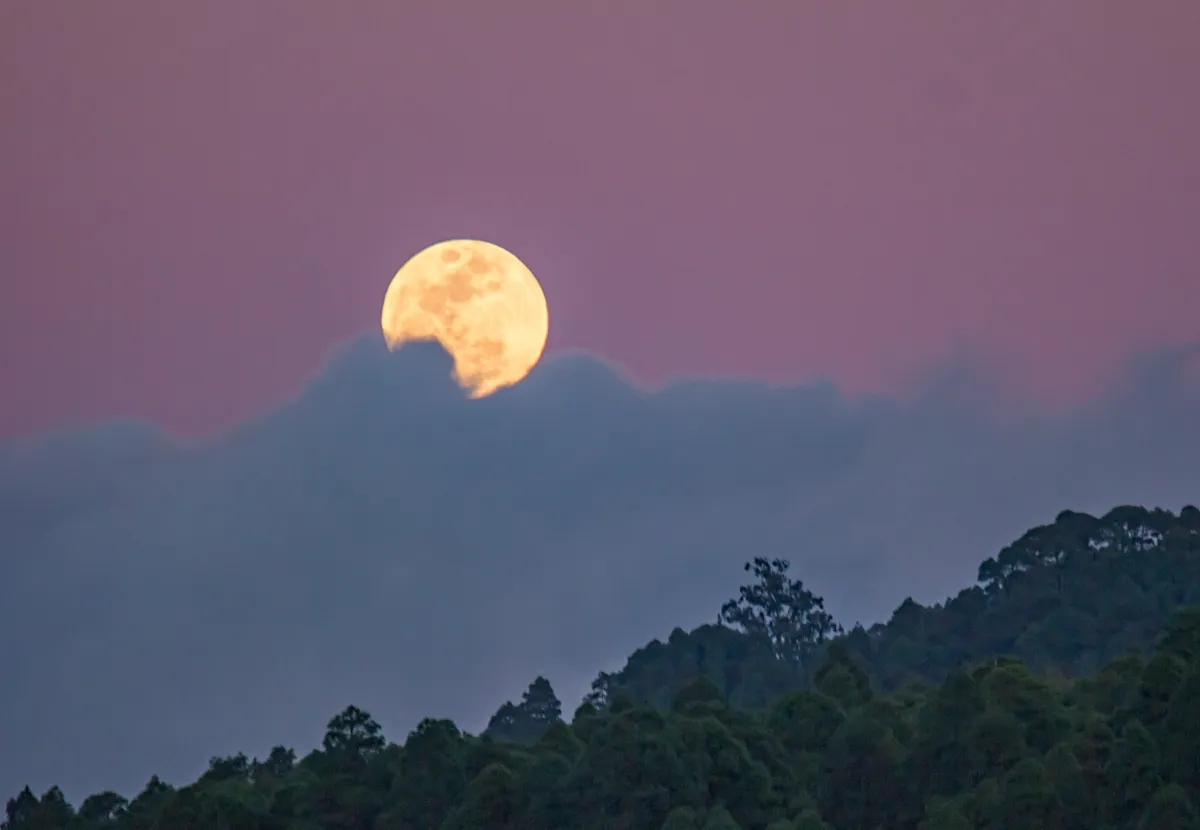
It’s all too easy to take the rising full Moon for granted, only stopping to watch if you glimpse it inadvertently rather than treating it as a celestial event in its own right.
Yet if you can get to an observing site with an unobstructed horizon on a clear evening, there are many fascinating phenomena to catch sight of as the Moon climbs.
One that tends to stops most people in their tracks is the famous ‘Moon illusion’, which makes the rising lunar disc appear larger than when it’s higher in the sky.

But there’s also the ‘rippling’ edge and ‘flattening’ of the Moon’s disc, caused by atmospheric refraction, to look out for – particularly with a small telescope or good binoculars.
And if the skies are really clear, watching the reddened full Moon rising below the pink ‘Belt of Venus’ – back-scattered light from the setting Sun at twilight – can make for wonderful observing memories.
See lunar rays

Frank Dutton, Kings Lynn, Norfolk, UK
There’s one type of lunar feature that really dazzles during a full Moon. They’re known as ray ejecta systems and they make fantastic imaging targets.
They appear as bright streaks radiating from certain craters and consist of the material thrown out from the violent impacts that formed these surface scars.
A DSLR attached to a lens or small telescope, with a focal length of around 300-400mm, will easily pick up the more extensive ray systems, such as that of crater Tycho or crater Copernicus.
A webcam or high frame rate CCD camera combined with a modest telescope is an ideal setup for capturing the wonderful complexity and unusual shapes of the ray ejecta around craters such as Copernicus (see above) and Proclus.
See a part of the Moon normally hidden
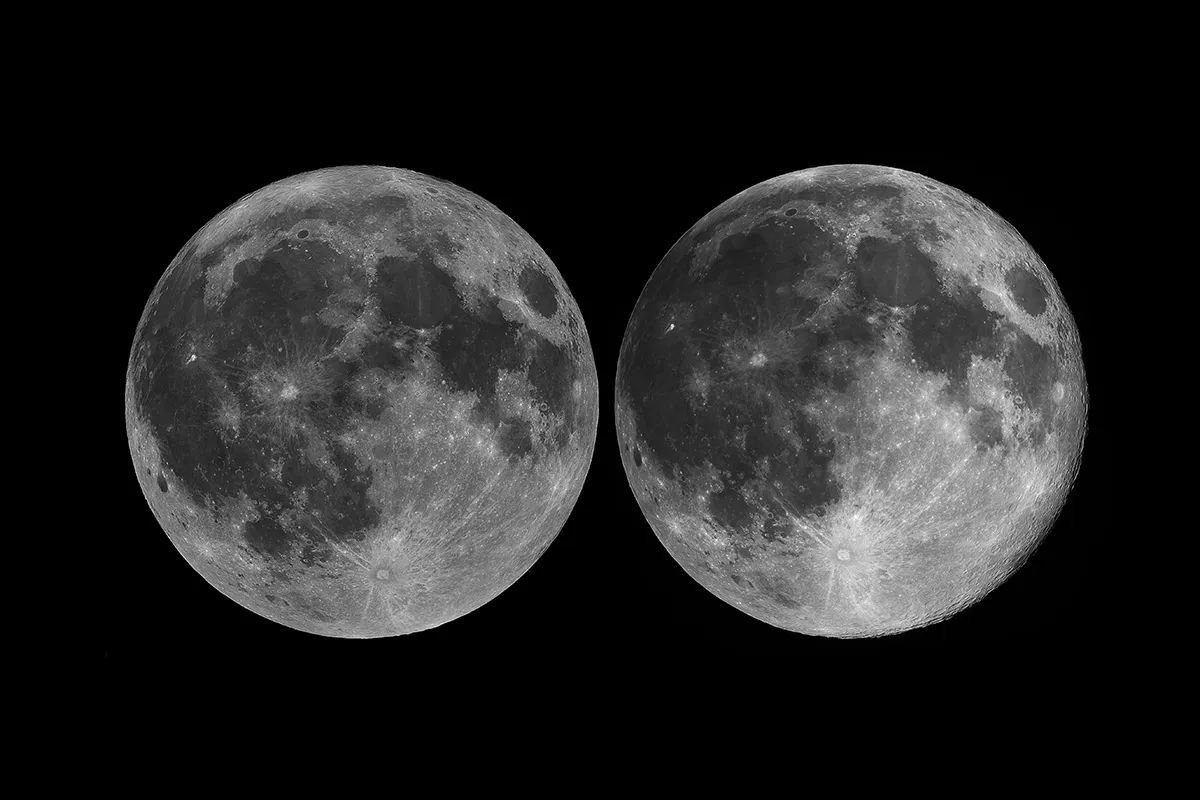
As the Moon orbits Earth it doesn’t always show the exact same face to us.
In fact, it appears to wobble during the course of its orbit so that otherwise-invisible parts of the lunar limb rotate towards us, while other parts are rotated away.
This allows us to glimpse a little more of the Moon’s globe than just a single, static hemisphere.
This phenomenon is known as lunar libration and it can bring into view craters and other surface features that aren’t always visible.
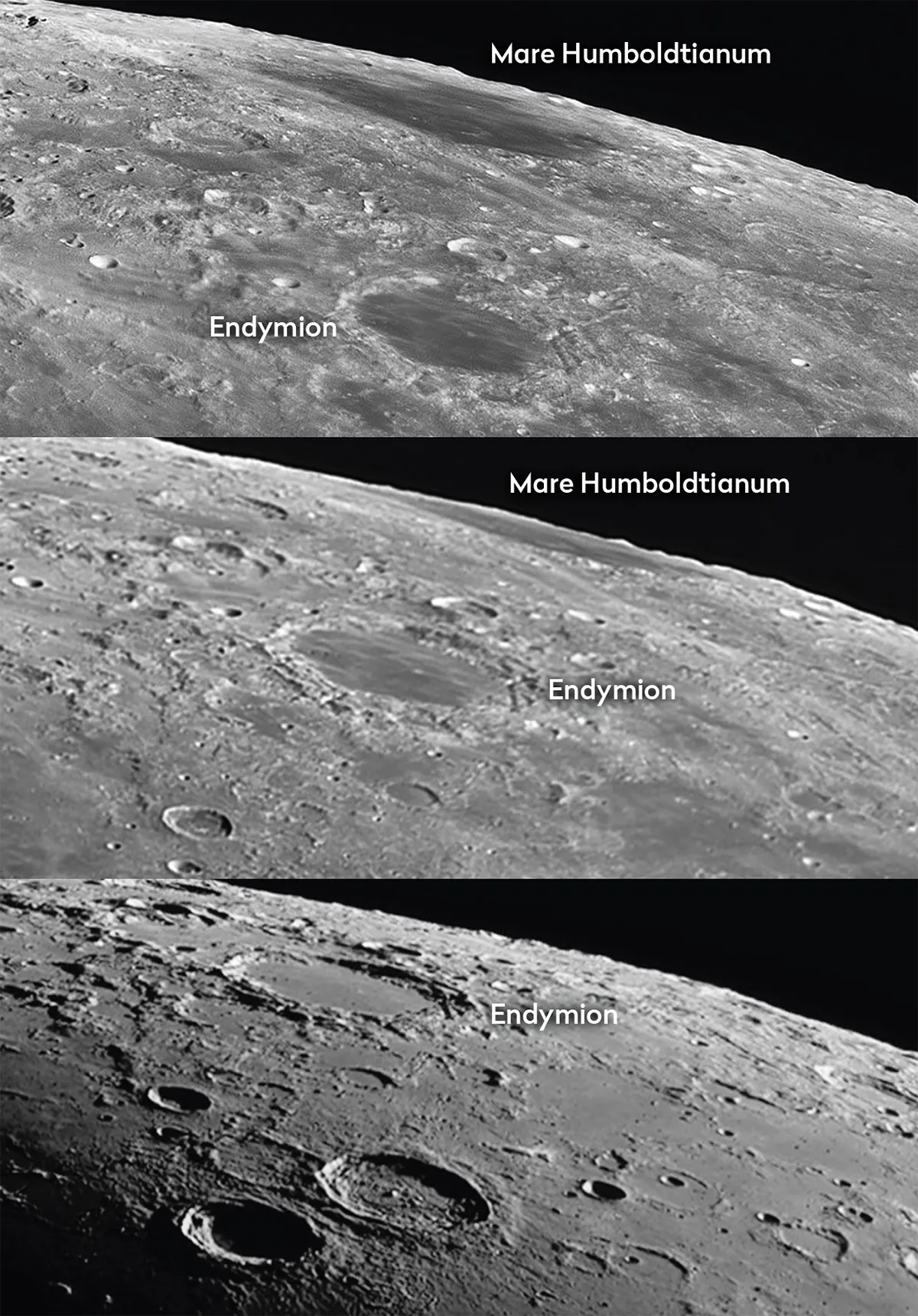
So don’t discount getting your telescope out on the nights around the full Moon when the gibbous Moon is shining brightly.
Although it might seem as if there’s only a narrow strip of terminator to observe, there may be a feature that libration has brought into a good position to study.
Features that benefit from libration include the Pythagoras and Grimaldi craters and the Mare Humboldtianum.
See a halo around the Moon

Have you ever stepped out to observe a full Moon and seen a halo around the Moon?
On most nights high, wispy, clouds drifting overhead would quickly curtail an imaging or observing session.
But at full Moon, as well as when our nearest neighbour is showing its larger ‘gibbous’ phases, bright moonlight often streams down through such clouds.
This can create beautiful haloes and other atmospheric phenomena that make intriguing and sometimes elusive celestial quarries.
One atmospheric phenomenon you may see around the time of full Moon is a bright ring of light around the lunar disc.
It’s an ice halo known as the 22° halo – due to its angular radius on the sky being 22° – and is caused by ice crystals suspended within high clouds refracting the light of the Moon.
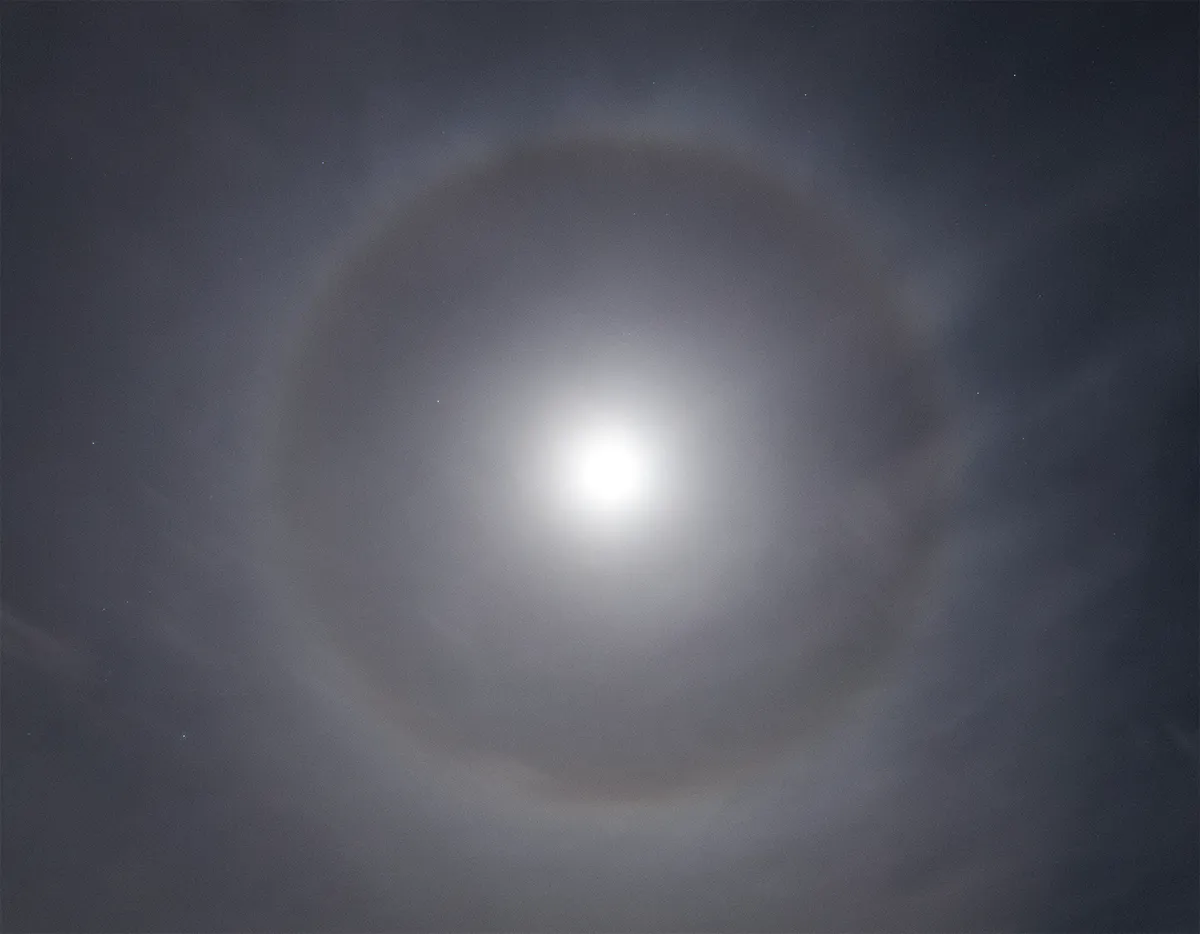
You can generally confirm what you’re seeing is the 22° halo by holding your outstretched hand at arm’s length, while placing the tip of your little finger over the lunar disc.
If the tip of your thumb is almost reaching the halo then you can be confident that it’s the 22° halo you’ve spotted.
Sometimes the 22° halo can be very faint – requiring you to block out the bright lunar disc with your outstretched hand to see – whereas other times it can be absolutely unmistakable, even against the glare of the Moon.
Another striking phenomenon, although this time created by diffraction through water droplets rather than ice within clouds, is the lunar corona, which appears as a spectacular series of concentric coloured bands around the Moon.
See a Moondog
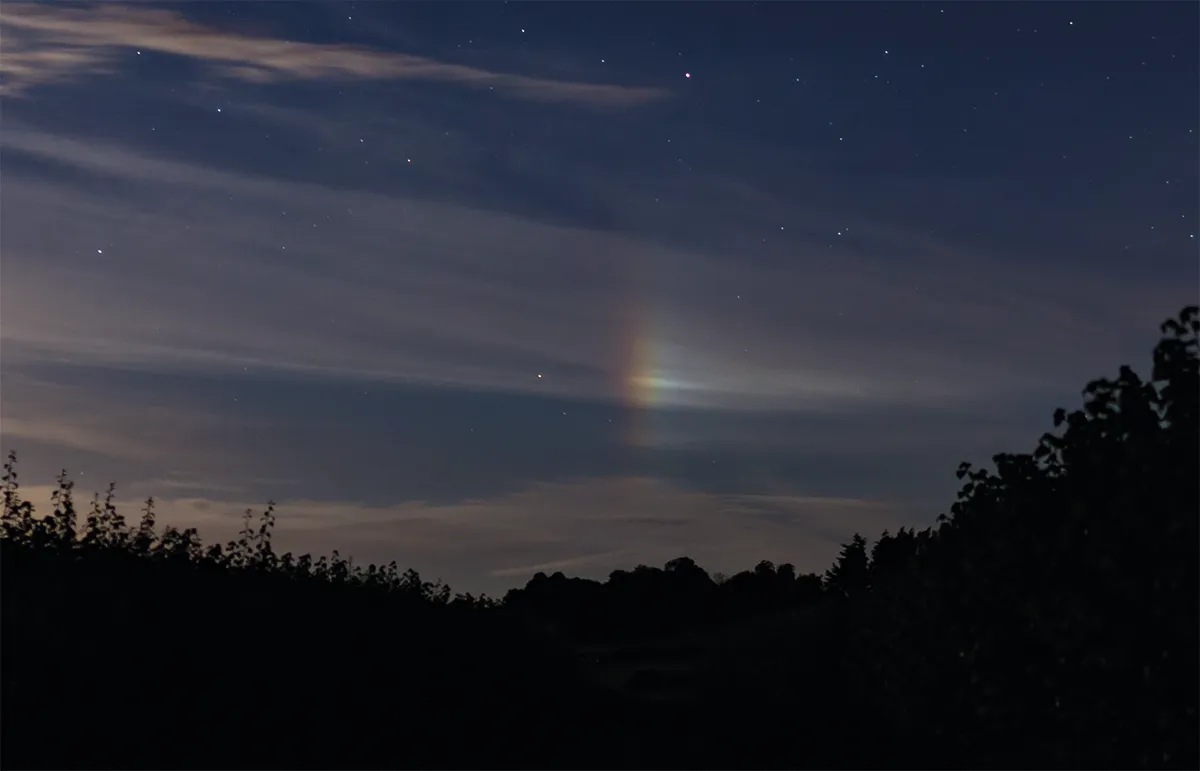
Perhaps the atmospheric phenomena that are the most rewarding to catch around the time of full Moon are the ethereal apparitions known as ‘moondogs’ or ‘paraselenae’.
These are just like the ‘sundogs’ that are seen during the daytime (read our guide to daytime astronomy) but tend to be much more difficult to spot due to their often being considerably fainter.
Just like the 22° halo, moondogs are formed by the refraction of moonlight through ice crystals within wispy clouds.
If the clouds are thin or scattered enough to allow bright stars to be seen around them they can be a truly exquisite sight as well as being a fantastic target for astrophotographers.
If it's been raining, you might also be able to see a moonbow.
Observe a full moon during lunar eclipse

Still not convinced about the reasons why getting out to observe a full Moon can be so worthwhile?
Maybe the magic of a celestial phenomenon that can only occur at this time will finally win you over. We’re talking, of course, about a total lunar eclipse.
Granted, they’re not exactly monthly events, but there’s no denying that the slow and serene progress of the Earth’s shadow across the lunar disc – with the full Moon turning from blazing silver to a soft orangey-red – makes for one of nature’s greatest shows.
You may have heard news of a recent study that found the Moon is rusting, but this isn't the reason it appears red.
It's to do with light reflecting off the Moon and making its way through Earth's atmosphere.
Find out more about this in our guide on why the Moon appears orange.
It’s worth watching these events just to see the fainter stars emerge during totality, when the sky darkens as the light of the full Moon is dimmed.
Find out which eclipses are coming up in our guide to the next eclipse.
If you observe or photograph a beautiful full Moon, and see or capture any of the phenomena listed above, get in touch with us by emailing contactus@skyatnightmagazine.com

